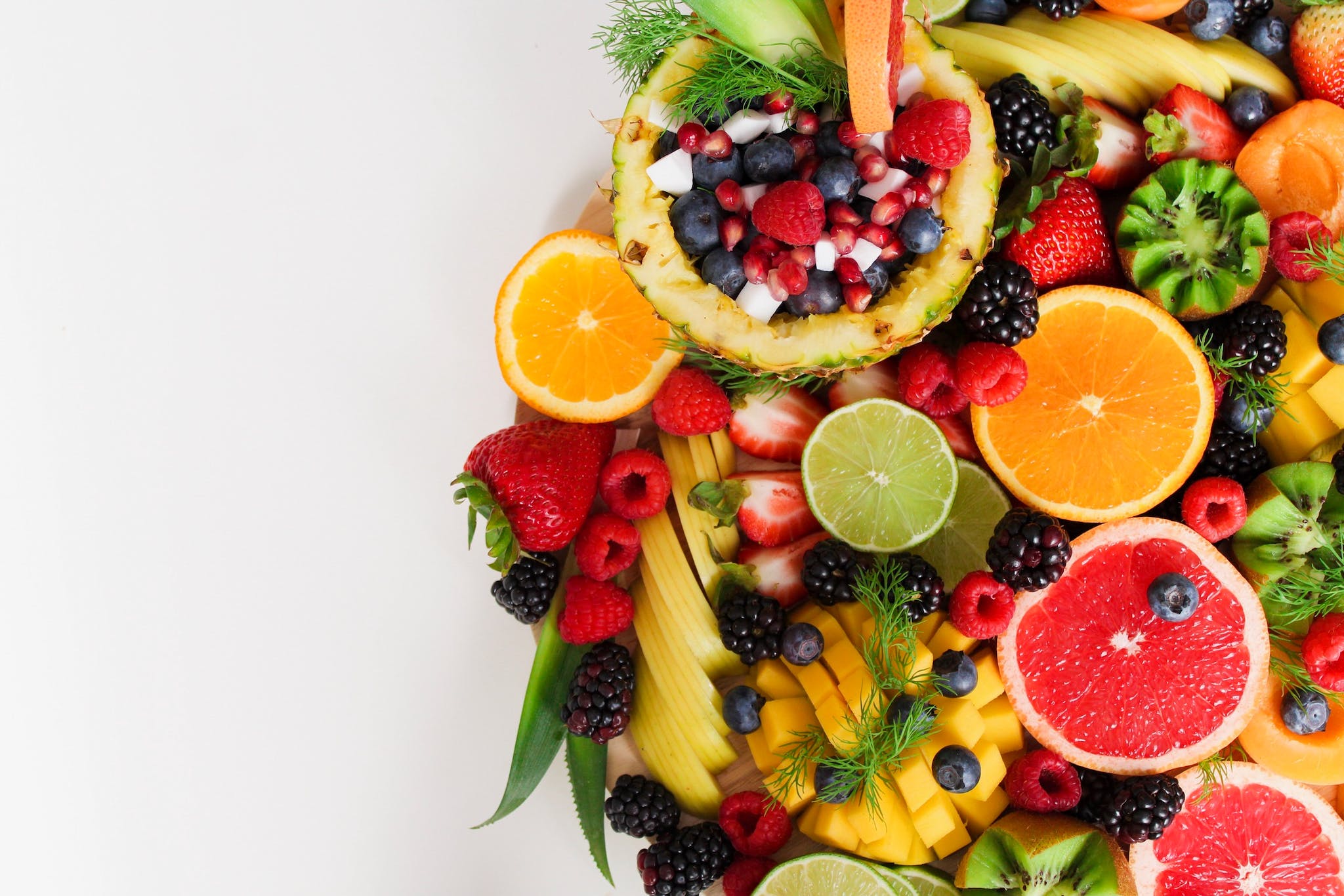In the landscape of modern eating habits, our kitchens have evolved into sanctuaries of convenience and quick fixes. The rows of canned green beans, the freezer stocked with bags of blueberries, and shelves adorned with an array of preserved goods speak volumes of our fast-paced lifestyles. These items have seamlessly woven themselves into the fabric of our daily meals, celebrated for their ability to bridge the gap between nourishment and the demands of a busy life. However, beneath the surface of these seemingly benign conveniences lies a reality far more concerning than many of us may realize.
Recent revelations have cast a shadow over these staples of the American diet, exposing a hidden threat that could be lurking within the very foods we’ve come to rely on. As we delve deeper into the world of food safety and health, it’s become clear that our trust in these everyday items may be misplaced. The issue at hand is not just about the immediate convenience these foods offer but about what they may carry with them into our homes and bodies—chemicals like bisphenol A (BPA) and a cocktail of pesticides that could compromise our health.
This time, the spotlight has turned to two foods beloved by many: blueberries and green beans, unveiling their unexpected addition to the notorious “Dirty Dozen” list.1 This revelation serves as a stark reminder that sometimes, what we don’t know can indeed hurt us. It’s a call to re-examine our food choices and the impact they have not only on our health but also on the environment.
The BPA Conundrum in Canned Goods
Bisphenol A, more commonly known as BPA, has quietly nestled itself into the linings of many canned goods that populate our kitchen shelves. This chemical, a mainstay in the production of plastics and resins since the 1950s, has been linked to a variety of health concerns, including cancer. Its presence in canned vegetables and fruits, such as green beans, presents a hidden risk that many of us unknowingly face with each meal we consume from these containers.2
BPA’s role in the manufacturing process is to prevent the metal of cans from corroding and breaking down, thereby preserving the food inside. However, this protective barrier can leach BPA into the food it’s meant to protect, posing a risk to consumers.
The health implications of this exposure are significant, with studies suggesting that BPA can mimic estrogen, a hormone critical to body functions. This mimicry can lead to hormonal imbalances, potentially resulting in reproductive issues, heart disease, and heightened cancer risk.3
A Growing Concern
The Environmental Working Group (EWG), a respected consumer health organization, has raised alarms about the presence of BPA in canned goods. Their research and advocacy work highlight the pervasive nature of this chemical in our food supply, urging consumers to reconsider their reliance on canned foods. Despite some manufacturers moving to BPA-free linings, the transition is not universal, leaving many products on the shelves that still contain this controversial chemical.
The revelation about BPA’s potential health risks underscores a critical gap in our food safety and regulatory systems. It challenges us to question the safety of convenience and pushes us toward making more informed choices about the foods we consume. As awareness grows, so does the demand for transparency and safer alternatives in our food packaging.

Unveiling the Dirty Dozen: Blueberries and Green Beans on the List
Each year, the Environmental Working Group (EWG) releases a list that many of us wait for with bated breath—the “Dirty Dozen.” This list, far from being an accolade, names the fruits and vegetables most contaminated with pesticides.
In a surprising twist, two staples of health-conscious diets, blueberries, and green beans, have found themselves on this list for 2023, ranking at the 11th and 12th spots, respectively. The inclusion of these beloved foods highlights a growing concern over the safety of our produce and the hidden dangers of pesticide exposure.
The Shocking Reality of Pesticide Contamination
Blueberries, often celebrated as a superfood packed with antioxidants, have a soft outer layer that is particularly vulnerable to pesticide absorption. The EWG’s findings are alarming: nearly 80% of blueberry samples tested contained residues of two or more pesticides. In some instances, traces of up to 17 different pesticides were discovered, including phosmet and malathion, both known for their toxicity to the human nervous system.
Green beans, on the other hand, have their own story of contamination. Despite being a versatile and popular vegetable, more than 70% of green bean samples were found to carry at least two pesticides, with a total of 84 different pesticides detected across the crop. Astonishingly, residues of acephate, a pesticide banned from use on green beans by the Environmental Protection Agency over a decade ago, were found in 6% of samples.
The presence of pesticides in these foods is not just a minor oversight; it’s a significant health risk. Pesticides, designed to kill pests, can also have detrimental effects on human health, ranging from acute poisoning to long-term developmental issues. The findings underscore the vulnerability of our food system to chemical contamination and the urgent need for more stringent regulatory oversight.
Making Safer Choices
The inclusion of blueberries and green beans in the Dirty Dozen serves as a crucial reminder of the importance of being mindful about our food choices. Opting for organic produce is one way to significantly reduce exposure to harmful pesticides. Organic farming practices prohibit the use of synthetic pesticides, offering a safer alternative for consumers.
Moreover, this revelation is a call to action for both consumers and policymakers. By supporting organic and locally grown produce, we can drive demand for cleaner, healthier food options. It’s also an opportunity to advocate for stronger pesticide regulations and more transparent food labeling, empowering consumers to make informed decisions about their health and the environment.
The appearance of blueberries and green beans on the Dirty Dozen list is a wake-up call to the realities of pesticide use in agriculture. It challenges us to reevaluate our choices and to take proactive steps towards a healthier, more sustainable food system. As we become more aware of these issues, we pave the way for positive change, ensuring that the foods we love and trust do not come at the cost of our well-being.
The Science Behind the Rankings
The annual publication of the Dirty Dozen and Clean 15 lists by the Environmental Working Group (EWG) serves as a beacon for consumers navigating the complex landscape of food safety. But what is the methodology behind these rankings, and how do certain fruits and vegetables end up on these lists? Understanding the science and criteria used by the EWG to compile these lists can empower us to make more informed decisions about the produce we consume.
Extensive Testing and Analysis
At the heart of these rankings lies a robust analysis of data from the United States Department of Agriculture (USDA) and the Food and Drug Administration (FDA). These federal agencies conduct thorough testing on produce samples collected from grocery stores across the country, examining them for pesticide residues. The EWG then analyzes this data, focusing on 46 different types of fruits and vegetables, to identify which items carry the highest and lowest amounts of pesticide residues.
6 Key Measures of Pesticide Contamination
The EWG employs six critical measures to evaluate and rank produce in terms of pesticide contamination:4
- Percentage of Samples with Detectable Pesticides: This measure assesses how often pesticides are detected in samples of each type of produce.
- Percentage of Samples with Two or More Pesticides: This indicator looks at the prevalence of multiple pesticide residues on a single sample, highlighting the issue of compound exposure.
- Average Number of Pesticides Found on a Single Sample: By calculating the average number of pesticides on each sample, this metric provides insight into the typical pesticide burden of each produce type.
- Average Amount of Pesticides (Measured in Parts per Million): This quantifies the concentration of pesticides found, offering a gauge of the intensity of pesticide use.
- Maximum Number of Pesticides on a Single Sample: Identifying the worst-case scenario, this measure reveals the sample with the highest number of different pesticide residues.
- Total Number of Pesticides Found on the Crop: This tally reflects the diversity of pesticides used on each type of produce, underscoring the complexity of exposure risks.
Beyond Pesticide Residue: Considering Bacterial Contamination
It’s essential to recognize that the Clean Fifteen list, while focusing on pesticide residue levels, does not account for bacterial contamination. Produce can become contaminated with bacteria at any point from farm to table, including during handling at grocery stores. This underscores the importance of thorough washing and handling practices for all fruits and vegetables, regardless of their ranking on the Dirty Dozen or Clean Fifteen lists.
The Impact of These Rankings
The Dirty Dozen and Clean Fifteen lists provide a valuable resource for consumers, guiding them towards making choices that minimize their exposure to harmful pesticides. By shedding light on the produce with the highest pesticide loads, the EWG empowers individuals to prioritize organic and lower-pesticide options, especially for items on the Dirty Dozen list. Conversely, the Clean Fifteen list reassures consumers about the relative safety of certain fruits and vegetables, suggesting that buying organic may be less critical for these items.
Understanding the criteria and methodology behind these rankings allows us to appreciate the complexities of pesticide exposure and its implications for our health. It also highlights the importance of continued vigilance and advocacy for cleaner, safer food production practices. Armed with this knowledge, we can navigate the grocery store aisles with greater confidence, making choices that support our well-being and the health of our planet.

Practical Tips for Reducing Pesticide Exposure
In light of the revelations surrounding the Dirty Dozen, particularly the unexpected inclusion of blueberries and green beans, it becomes imperative to explore practical strategies for reducing our exposure to harmful pesticides. While the ideal scenario involves consuming entirely pesticide-free produce, there are several steps we can take to mitigate the risks and safeguard our health.
Effective Washing Techniques
Washing your fruits and vegetables can significantly reduce pesticide residues, although it may not eliminate them entirely. Here are some effective tips for cleaning your produce:
- Rinse Under Cold Running Water: This simple step can help remove a significant amount of pesticide residue and dirt. It’s more effective than soaking, as soaking can spread residues from one produce item to another.
- Use a Produce Brush: For fruits and vegetables with hard surfaces, like apples, potatoes, and cucumbers, scrubbing with a produce brush under running water can help remove additional pesticides and dirt.
- Peel When Appropriate: Peeling fruits and vegetables can reduce pesticides but also removes valuable nutrients found in the skin. Use this method judiciously.
- Consider a Baking Soda Soak: Research suggests that a solution of baking soda and water (about 1 teaspoon baking soda in 2 cups of water) can remove some pesticides from the surface of produce, especially for items with thicker skin.
- Dry with a Clean Cloth or Paper Towel: After washing, drying your produce can remove any lingering pesticides or dirt.
Choosing Organic and Locally Grown Produce
- Opt for Organic: Whenever possible, choose organic fruits and vegetables, especially for those items listed on the Dirty Dozen. Organic farming practices prohibit or severely limit the use of synthetic pesticides, making these products a safer choice.
- Support Local Farmers: Locally grown produce is often fresher and has less of an environmental footprint. Engaging with local farmers can also provide insight into their farming practices, allowing you to make informed decisions about the produce you consume.
Expanding Your Knowledge and Advocacy
- Stay Informed: Keep abreast of the latest research and recommendations regarding pesticides and food safety. Organizations like the EWG regularly update their guides and lists based on new data.
- Advocate for Change: Support policies and initiatives that aim to reduce pesticide use and promote sustainable farming practices. Your voice can contribute to a broader movement towards safer, healthier food systems.
Do’s and Don’ts of Washing Produce
Do’s:
- Do wash your hands before and after handling fresh produce.
- Do rinse produce before you peel or cut it to prevent dirt and bacteria from transferring from the knife onto the fruit or vegetable.
- Do use clean and sanitized utensils and cutting boards.
Don’ts:
- Don’t use soap, detergent, or commercial produce washes. These are not intended for consumption and could leave harmful residues.
- Don’t forget to wash items with non-edible peels, like melons and avocados, as cutting them can transfer contaminants to the flesh.
By integrating these practices into our daily routines, we can reduce our exposure to pesticides and make healthier choices for ourselves and our families. While the challenge of navigating a world filled with chemical residues can seem daunting, informed and mindful actions can lead to significant improvements in our overall well-being.
Understanding the Health Risks of Pesticides
The conversation surrounding pesticide exposure often centers on their immediate effects on our health, but it’s the long-term implications that can be even more concerning. Understanding these risks is crucial for making informed decisions about our diet and supporting agricultural practices that prioritize both human health and environmental sustainability.
The Spectrum of Health Risks
- Neurological Impacts: Certain pesticides have been linked to neurological issues, including reduced cognitive function and motor skills. This is particularly concerning for children, whose developing brains are more vulnerable to toxic exposures.5
- Cancer: The link between pesticide exposure and various forms of cancer has been a significant concern. Some pesticides are known carcinogens, increasing the risk of cancers such as lymphoma and leukemia.6
- Hormonal Disruption: Many pesticides can act as endocrine disruptors, interfering with hormone balance. This can lead to reproductive health issues, thyroid disorders, and developmental problems in children.7
- Respiratory Problems: Exposure to pesticides, especially for those living near agricultural areas or involved in farming, can contribute to respiratory issues, including asthma and other lung conditions.8
- Skin and Eye Irritation: Direct contact with certain pesticides can cause immediate skin and eye irritation, a more noticeable but less severe risk that nonetheless underscores the toxic nature of these chemicals.9
Vulnerable Populations
Certain groups are particularly susceptible to the adverse effects of pesticide exposure. Children, pregnant women, and individuals with pre-existing health conditions face higher risks and require additional precautions to minimize their exposure.
Steps Toward Minimization and Advocacy
- Prioritize Organic and Low-Pesticide Options: Whenever possible, choose foods that are grown without or with minimal use of pesticides. The Dirty Dozen and Clean Fifteen lists by the EWG can serve as helpful guides for prioritizing which foods to buy organic.
- Support Sustainable Farming Practices: Advocate for and support agricultural methods that reduce or eliminate pesticide use, such as integrated pest management (IPM), organic farming, and regenerative agriculture. These practices not only mitigate health risks but also contribute to environmental preservation.
- Educate and Engage: Raise awareness about the health risks associated with pesticide exposure within your community. Encouraging informed choices can collectively drive demand for safer, healthier food systems.
Regulatory Perspectives
While regulatory agencies set limits on pesticide residues in food, debates continue over the adequacy of these standards and the methods used to assess long-term safety. Advocating for stricter regulations and more comprehensive testing can help ensure that public health is adequately protected against the potential harms of pesticide exposure.
The health risks associated with pesticides underscore the importance of making informed choices about the foods we eat and the need for systemic change in our agricultural practices. By understanding these risks and taking proactive steps to minimize exposure, we can protect our health and contribute to a more sustainable and safe food system. As we become more aware of these issues, we have the opportunity to advocate for changes that prioritize the well-being of people and the planet alike.
Beyond Personal Health: The Environmental Impact
While the focus on the health implications of pesticide use is crucial, it’s equally important to consider the broader environmental impact. The choices we make at the dinner table extend far beyond personal health, influencing ecosystems, biodiversity, and the planet’s overall well-being. Here, we delve into how our food choices, particularly concerning pesticide use, affect the environment and what steps we can take to mitigate these impacts.
Pesticides and Ecosystems
Pesticides don’t discriminate; they can harm unintended targets, such as beneficial insects, aquatic organisms, and non-target plant species. This disruption can lead to a decline in biodiversity and the destabilization of ecosystems. For example, the decline in bee populations, crucial pollinators for many crops and wild plants, has been partly attributed to pesticide exposure.
Soil Health and Agriculture
Healthy soil is the foundation of productive agriculture, yet intensive pesticide use can degrade soil quality by killing beneficial microorganisms essential for nutrient cycling and soil structure. This degradation not only reduces the land’s productivity over time but also contributes to erosion and water pollution, further harming aquatic life and water quality.
Water Use and Contamination
Agriculture is a significant user of freshwater resources, and the use of pesticides can lead to the contamination of these vital water sources. Runoff from agricultural fields carries pesticides into rivers, lakes, and groundwater, posing risks to aquatic ecosystems and human health. Minimizing pesticide use can help protect these water resources and ensure safer drinking water for communities.
Climate Change and Carbon Footprint
The production, transportation, and application of synthetic pesticides contribute to greenhouse gas emissions, exacerbating climate change. Moreover, agricultural practices that rely heavily on chemical inputs generally have a larger carbon footprint compared to more sustainable methods, such as organic farming, which often emphasizes soil health and can sequester more carbon.
Promoting Sustainable Practices
- Support Organic and Regenerative Farming: These farming methods reduce or eliminate the need for synthetic pesticides and fertilizers, focusing instead on practices that restore soil health, increase biodiversity, and reduce carbon footprint.
- Local and Seasonal Eating: Choosing local and seasonal produce can reduce the environmental impact associated with long-distance transportation and storage, which often involves additional energy consumption and waste.
- Consumer Advocacy: Demand for organic and sustainably grown food sends a strong message to the food industry about consumer preferences, encouraging more environmentally friendly farming practices.
Every purchase we make is a vote for the kind of world we want to live in. By choosing foods grown with minimal or no pesticide use, we’re not only protecting our health but also supporting farming practices that are more harmonious with nature. These choices can drive change in the agricultural sector, leading to more sustainable practices that protect the environment and ensure the long-term viability of our food systems.
Toward a Pesticide-Free Future
Through our exploration of the complexities of pesticide use in our food system, it’s clear that the path toward a healthier, more sustainable future is both necessary and achievable. The revelations about pesticides in our beloved foods, such as blueberries and green beans, serve as a stark reminder of the challenges we face in ensuring the safety and integrity of our diets. However, these challenges also present us with an opportunity to make meaningful changes that extend far beyond our personal health, impacting the health of our planet and future generations.
Awareness is the first step in this transformative journey. By understanding the risks associated with pesticide exposure and the environmental consequences of conventional farming practices, we equip ourselves with the knowledge needed to make informed choices. These choices, whether they involve selecting organic produce, supporting local farmers who practice sustainable agriculture, or advocating for stricter pesticide regulations, contribute to a larger movement towards a pesticide-free world.
The power of individual action cannot be overstated. Each decision to purchase organic, to grow our own food without the use of harmful chemicals, or to educate others about the importance of sustainable farming practices, sends a ripple through the food system. These ripples can turn into waves of change, encouraging more farmers to adopt organic practices, influencing food companies to prioritize clean ingredients, and compelling policymakers to strengthen regulations on pesticide use.
Embracing organic gardening is not just an act of resistance against a system reliant on chemical inputs; it’s a step towards reconnecting with the earth and understanding the cycles of nature that sustain us. It empowers us to take control of our food sources, provides us with the freshest, most nutritious produce, and reduces our environmental footprint. Whether through a backyard garden, a community plot, or a few containers on a balcony, growing our own food is a deeply rewarding and impactful practice.
As we move forward, let us support initiatives aimed at reducing pesticide usage in agriculture, championing the transition to organic farming, and preserving the biodiversity that is vital to our planet’s health. Let us advocate for policies that protect our health, our environment, and the well-being of farmworkers who are often the most directly impacted by pesticide exposure.
The journey toward a pesticide-free future is one of hope, empowerment, and collective action. By making informed choices, embracing sustainable practices, and advocating for change, we can shape a future that prioritizes the health of our families, our communities, and our planet. Together, let’s commit to this path, knowing that with each step we take, we’re cultivating a cleaner, greener, and more vibrant world for all.
My Personal RX on Navigating Consumer Goods Risks
From my standpoint as a doctor, the conversation around the health risks associated with canned foods — particularly concerns around bisphenol A (BPA) and pesticide residues — is not just about scare tactics; it’s about empowering patients with knowledge for healthier choices. Understanding what’s in your food and its potential impact on your health is the first step in taking control of your dietary habits and overall well-being.
- Prioritize Fresh or Frozen Produce: Whenever possible, choose fresh or frozen fruits and vegetables over canned alternatives. This simple switch can significantly reduce your exposure to BPA and pesticides, ensuring you get the nutritional benefits without the unwanted chemicals.
- Opt for BPA-Free Packaging: For those times when canned goods are unavoidable, look for products explicitly labeled as “BPA-free.” This helps minimize your risk of exposure to this harmful chemical.
- Incorporate Super Greens: Integrate a powdered supplement like my Super Greens into your daily routine. This full-spectrum superfood blend can help fill any nutritional gaps in your diet, delivering a concentrated dose of vitamins, minerals, and antioxidants without the risk of BPA or pesticides.
- Rinse Canned Goods: If you must use canned vegetables or beans, rinse them thoroughly under running water before use. This can help wash away some of the chemicals and reduce your exposure.
- Educate Yourself with my Toxic Ingredient Guide: Arm yourself with knowledge by using resources like my Toxic Ingredient Guide. Understanding which toxic ingredients to avoid can help you make smarter, healthier product choices, not just in foods but across all consumer goods.
- Choose Glass or Stainless Steel Containers: When storing leftovers or packing meals, opt for glass or stainless steel containers over plastic ones to avoid BPA and other harmful chemicals found in certain plastics.
- Support Organic and Local Farming: Whenever possible, buy organic and locally sourced foods. This not only supports local farmers but also reduces your exposure to pesticides and promotes a more sustainable food system.
- Grow Your Own: If space allows, consider growing your own vegetables and herbs. This is the best way to ensure your food is free from harmful pesticides and BPA, and it can be a rewarding hobby.
- Stay Informed on Food Safety: Keep abreast of the latest research and recommendations regarding food safety, BPA, and pesticide exposure. Knowledge is power, and staying informed helps you make better choices for your health.
- Advocate for Safer Food Practices: Use your voice as a consumer to demand safer food packaging practices and stricter regulations on pesticides in agriculture. Collective consumer pressure can lead to significant changes in the industry.
By incorporating these tips into your lifestyle, you can significantly reduce your exposure to the potential health risks associated with canned foods. Remember, the goal is not perfection but making more informed choices that contribute to your long-term health and well-being.
Sources:
- EWG’s 2023 Shopper’s Guide to Pesticides in ProduceTM: Blueberries, green beans join the Dirty DozenTM. (2023, March 15). Environmental Working Group. https://www.ewg.org/news-insights/news-release/2023/03/ewgs-2023-shoppers-guide-pesticides-producetm-blueberries-green ↩︎
- Bisphenol A (BPA). (n.d.). National Institute of Environmental Health Sciences. https://www.niehs.nih.gov/health/topics/agents/sya-bpa ↩︎
- Gao, H., Yang, B., Li, N., Ling, F., Shi, X., Zhao, W., & Liu, S. (2015). Bisphenol A and Hormone-Associated cancers. Medicine, 94(1), e211. https://doi.org/10.1097/md.0000000000000211 ↩︎
- Environmental Working Group. (n.d.). Check out @EWG’s 2023 Shopper’s Guide to Pesticides in ProduceTM! #DirtyDozen #CleanFifteen | @ewg |. https://www.ewg.org/foodnews/summary.php ↩︎
- Liu, J., & Schelar, E. (2012). Pesticide Exposure and Child Neurodevelopment: Summary and implications. Workplace Health & Safety, 60(5), 235–242. https://doi.org/10.3928/21650799-20120426-73 ↩︎
- Bassil, K. (2007, October 1). Cancer health effects of pesticides: Systematic review. PubMed Central (PMC). https://www.ncbi.nlm.nih.gov/pmc/articles/PMC2231435/ ↩︎
- Mnif, W., Hassine, A. I. H., Bouaziz, A., Bartegi, A., Thomas, O., & Roig, B. (2011). Effect of endocrine disruptor pesticides: A review. International Journal of Environmental Research and Public Health, 8(6), 2265–2303. https://doi.org/10.3390/ijerph8062265 ↩︎
- Mamane, A., Baldi, I., Tessier, J. F., Raherison, C., & Bouvier, G. (2015). Occupational exposure to pesticides and respiratory health. European respiratory review : an official journal of the European Respiratory Society, 24(136), 306–319. https://doi.org/10.1183/16000617.00006014 ↩︎
- Damalas, C. A., & Koutroubas, S. D. (2016). Farmers’ Exposure to Pesticides: Toxicity Types and Ways of Prevention. Toxics, 4(1), 1. https://doi.org/10.3390/toxics4010001 ↩︎



















